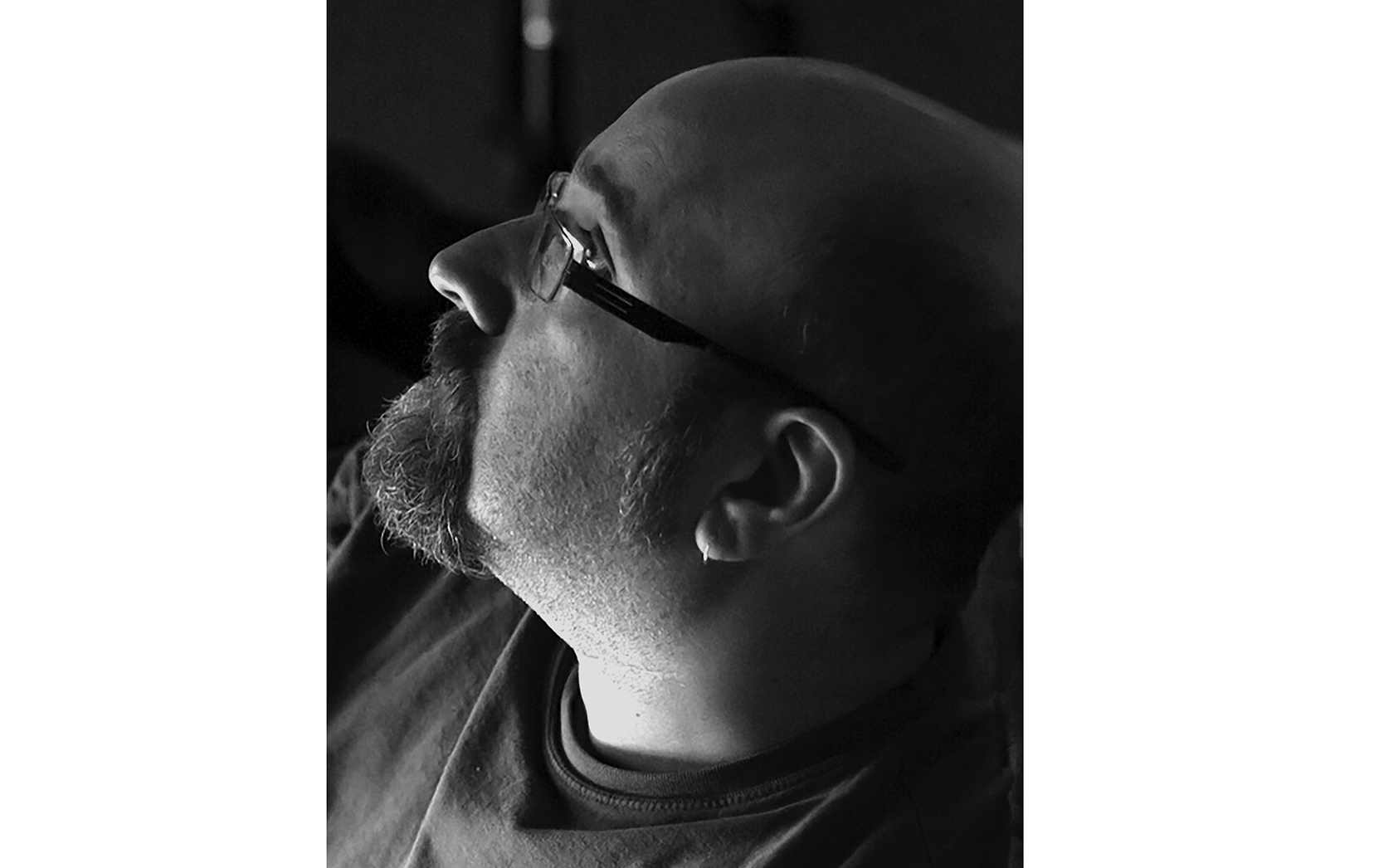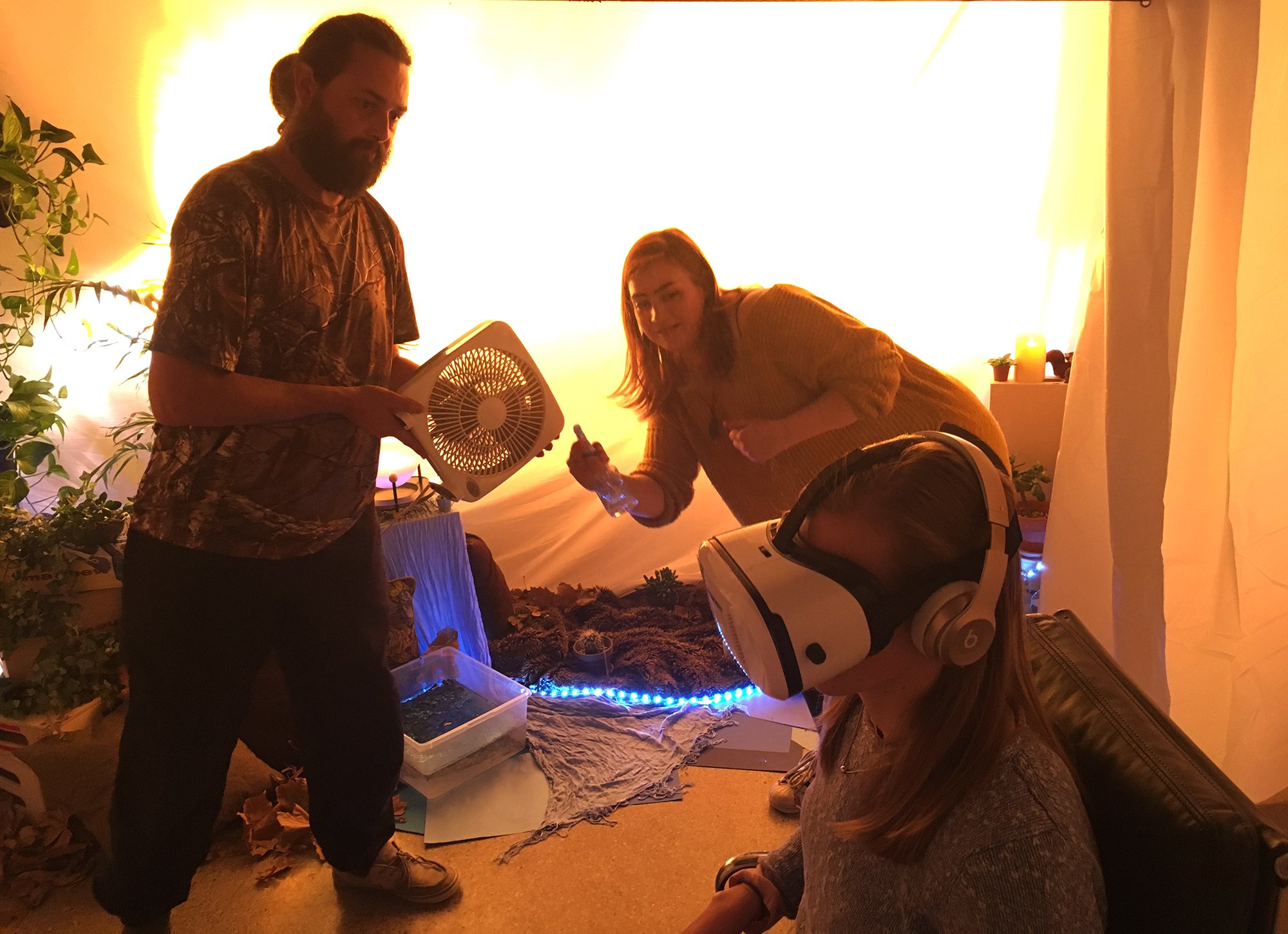Next up in Live Design’s What’s Trending: Education series is assistant professor for digital media in performance at the University of Iowa, Daniel Fine. With roots in projection design, his recent projects include: Kansas No More, a 15-minute dance with five dancers, three projectors, two live cameras, Watchout, Isadora, two computers, and a 42'x23' projection surface with five doors and eight windows; and Live Geometry, a four-hour durational performance with five projectors, four live cameras, live video mixing, a 3D clay printer, Isadora, two computers, and real-time data driven visuals used as “video glaze” on ceramic objects, to name just two.
At LDI2018, Fine will present a solo session on The Art of Content Creation and take part in the third annual Projection Mapping Summit. In his extensive, three-part What’s Trending: Education essay, he addresses the challenges that many schools face in successfully integrating digital media and projection design into their curriculum. Read Part One first.
Part Two From Daniel Fine

There is no way around it: Equipment is expensive, and it will be outdated in just a few short years and you will need to re-invest. This is a huge obstacle to overcome. So, how can you raise the funds—in the multiple thousands—that are needed to buy the gear? I suggest tapping into any technology fees that students pay into.
At the University of Iowa, every undergraduate student pays a $500 yearly technology fee. With nearly 25,000 undergrads, that adds up to a substantial amount of money worth $12.5 million. This pot of money funds the University’s IT infrastructure, but it also serves as a resource for students. Any full-time faculty or staff can apply for grants from this pool of Student Technology Fees to fund equipment for use directly by undergrads for the advancement of their education.
When I was hired, I told the hiring committee, my department chairs, the Dean, everyone—that I could not teach digital and new technologies without the actual equipment. They all understood this. I was awarded a multi-year start-up package to purchase the needed equipment for my classes from the above-mentioned student technology fees. It has required that I write grants to receive this funding, but it is well worth it.
Not everyone is going to have this pool of technology money they can tap into. But you have to educate the powers that be, that like starting a film program or a lighting program or a photography program, there must be an investment in equipment. And there should be a plan for replacing the equipment as it ages and new gear is introduced in the professional market.
An option might be to partner with another department to share resources. Does the film/video and/or art department have gear that you can use? What do they receive in return from your department? Perhaps you buy additional equipment they don’t have or newer models to supplement their inventory and then you all share. I don’t know about your funding sources, but at my University, it is easier to receive funds for equipment that will be used by multiple students across multiple departments. Of course, this sharing of gear will require additional administrative support, but it may be an option.
What is some of the gear that you need? Digital media/projection designers create content by taking photographs and video, editing video, key-framing animations, capturing motion data from performers, etc. This means a wide variety of gear is needed to create content. And then there is the need to display the content on stages, in rehearsal halls, in site-specific performance venues, etc. Here’s a short list of the type of equipment your students need to get started:
- Content creation:
- DSLR Camera package (fast SD card, extra batteries, wide and telephoto lenses) [serves the dual purpose of high quality photos and video]
- Fluid head tripod
- Audio recording package (digital recording device, shotgun microphone, headphones)
- Camera stabilizer
- Lighting kits with gels and stands
- Computer lab with Adobe Creative Suite (Photoshop, Illustrator, Premiere Pro, After Effects, Audition, etc.)
- Laptop Computers with Adobe Creative Suite, QLab, and Isadora
- Sensors (Kinect, RealSense, etc.)
- Content Display:
- High-Lumens projectors for the stage (this might come out of equipment for mainstage productions)
- Small portable projectors for class projects, rehearsals, and small performance venues
- Media servers (QLab, Isadora, Watchout) with live capture cards
- Video cameras for live feed (SDI out is preferred for low-latency)

There are a few hidden costs that you need to think about with gear:
- Maintenance: What happens when something breaks and needs to be fixed or replaced? How is that paid for?
- Check-in/out: You have all this gear. How will students receive access to it? How can they make reservations? Be charged late fees? You need a database and barcode system for inventory and a method for students to check-in/out gear. The University of Iowa IT department created an online database for this purpose that multiple departments use. Maybe your University has something already? Or you can purchase an off-the-shelf database manager.
- The check-in/out system also requires human power. Will you have student workers or a staff member supervise the gear and be there for check-in/out hours? Or will this responsibility fall to the faculty member? If it is the faculty member, make sure that it counts as service to the department and other service assignments are taken away. This is a substantial time commitment.
- Storage: Where will all the gear be securely stored?
- Is there a system in place to replace the gear in five or so years when it is outdated?
Getting the right gear and the right amount is crucial to student success. Students can only truly learn by using and experimenting with hardware and software. It is this hands-on tinkering that teaches the basics while also allowing for new artistic discoveries and methods for storytelling to be created.
Stay tuned for more in Part Three!